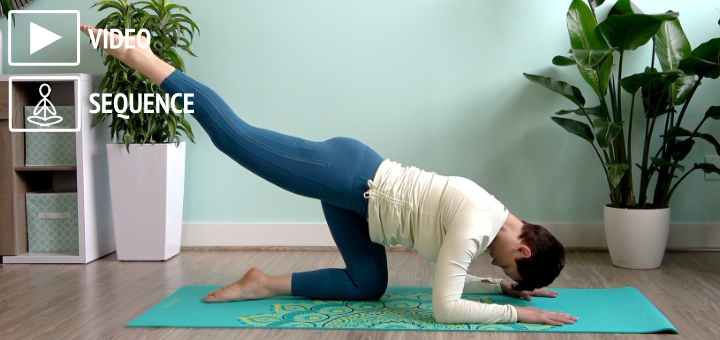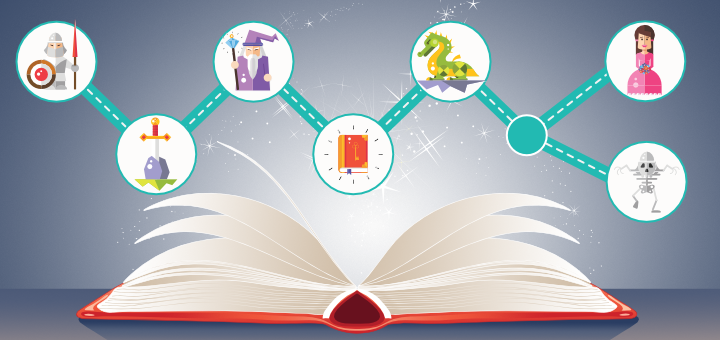“Elevator pitch” for yoga teachers: How to quickly communicate to anybody what is it that you do

For the last several weeks, my neighborhood has been having Happy Hour get-togethers on Thursday evenings to check in and make sure everybody was doing OK. We keep a safe distance and chat about stuff. I believe that I talked more with some of my neighbors during those Thursdays than in the previous ten years of living on my street :). During one of those conversations, a neighbor who had a general idea that I was a yoga teacher wanted to know more about it. I decided to test my “elevator pitch” and said: “I teach yoga one-on-one to older professional women to help them deal with aches and pains and general effects of aging so that they could stay active, resilient, and strong.” Her eyes immediately lit up. She cried out: “I so need this, and so does my wife. Caroline, come over here!” We all chatted for a while longer and made a plan to get started once things got a bit more settled. The next day, I was walking my dog and ran into the same neighbor on the street who was talking to her friend. “This is the yoga teacher I was telling you about,” she exclaimed, addressing her friend, “You should definitely come see her!”
I was really excited to see that my elevator pitch had resonated with my neighbor to the point that she was willing to not only give my services a try but also recommend me to her family and friends. These are the type of referrals we are looking for, but they are only possible if we are able to distill what we do into one brief sentence that captures people’s attention. How do we do that?
For the past several weeks, we’ve been talking about telling your potential students a story to introduce them to your services and pique their interest. The story usually unfolds like this: A CHARACTER (your potential student) who wants something, encounters a PROBLEM. At the peak of their despair, a GUIDE (you) steps in, gives them a PLAN, and CALLS THEM TO ACTION. That action helps them avoid FAILURE and ends in SUCCESS. You can use a condensed version of this story as your one-liner to quickly communicate to anybody who is willing to listen what it is that you do. Here are the main elements of your one-liner:
1. The Character (Who are the people that you work with?)
2. The Problem (What are they dealing with?)
3. The Plan (How do you work with them?)
4. The Success (What will they get as a result of their work with you?)
For example, let’s break down the “elevator speech” I mentioned earlier: “I teach yoga one-on-one to older professional women to help them deal with aches and pains and general effects of aging so that they could stay active, resilient, and strong.” Here are all the main elements in this short story:
1. The Character: Older professional women
2. The Problem: Aches and pains and general effects of aging
3. The Plan: One-on-one yoga
4. The Success: To stay active, resilient and strong
Does this mean that this is the only type of student I work with or that these are the only things we explore? Of course not. However, it is specific enough that my neighbor was able to recognize herself and her problems in that description and quickly decide that my services interest her.
If I were talking to a yoga teacher, in my answer to the same question, I would say something like this: “I provide continuing education to yoga teachers to sort through the noise of conflicting information on different yoga subjects so that they could design meaningful and effective yoga practices for their students.” Here are all the main elements in this short story:
1. The Character: Yoga teachers
2. The Problem: Sort through the noise of conflicting information on different yoga subjects
3. The Plan: Continuing education
4. The Success: To design meaningful and effective yoga practices for students
It usually takes time and some serious refinement to make sure that your message is brief and reflects clearly what you do. That’s why it’s useful to test different versions of your one-liner in your conversations with different people and see what evokes the most enthusiastic response. Once you streamline your message, you will need to use it frequently in conversations and in your marketing materials to make sure that other people can reproduce it and use it to recommend your services. This is the best way to build a strong referral system.
This type of messaging is very effective because it identifies the challenges that specific people face (so that they feel seen) and then offers them a path to overcome those challenges. Ultimately, each one of us is looking for a way to evolve. This evolution encompasses a wide variety of things: alleviating pain, losing weight, increasing athletic performance, mastering a skill, becoming better at managing one’s time, tasks, emotions or relationships, and so on. We all want to be better at something or just learn to accept ourselves the way we are. We can help our students identify and envision that aspirational identity they strive toward and show them that we are invested in their transformation.
Donald Miller, in his book Building a StoryBrand, describes it this way: “When a brand commits itself to their customers’ journey, to helping resolve their external, internal, and philosophical problems, and then inspires them with an aspirational identity, they do more than sell products – they change lives. And leaders who care more about changing lives than they do about selling products tend to do a good bit of both.” Most of us had started teaching yoga for precisely that purpose – to assist with our students’ personal transformation. We need to inspire them with a vision of what’s possible and teach them the tools they can use to get there.
Here are the examples of aspirational identities from the stories above:
A yoga teacher to older women takes her students
From: Achy and struggling with effects of aging
To: Active, resilient, and strong
A yoga therapist who provides continuing education to yoga teachers takes other teachers
From: Confused and uncertain
To: Competent and confident
Ultimately, all of our work is about empowering our students to believe in themselves and their capacity to change their physical, physiological, and mental-emotional state for the better. All our messaging (in person, online, and on social media) needs to reflect that. We need to be talking about our students and their journey instead of ourselves. Sri Krishnamacharya used to say: “A teacher should wear neutral clothing,” meaning that a good yoga teacher plays a supportive role and makes every session about the student and their needs. The same principle applies to our promotional materials. The more we talk about our students and their stories, the more we show that we understand, care, and are invested in their personal transformation and the greater meaning our work will have both to us and to our students.
I hope that you enjoyed our series of posts, Refine Your Story: How to Effectively Communicate with Your Potential Yoga Students. Below is the list of all the posts in proper order for your reference.
Refine Your Story: How to Effectively Communicate with Your Potential Yoga Students
The secret formula that will grow your yoga business
In the current climate, we cannot rely on yoga studios, gyms, and other locations to bring yoga students to us; we are left to our own devices and have to figure out a way to find and attract those students ourselves. Here is how we can do it.

Who are your yoga students, and what problems do they face?
If you identify the underlying frustrations that your yoga students experience and offer solutions, they will be much more likely to engage your services.
 Two main qualities that define a good teacher and attract new students
Two main qualities that define a good teacher and attract new students
Our own lives are being steered by all sorts of guides who step in at just the right moment to assist us on our journey. We all get guidance from parents, teachers, coaches, partners, doctors, mentors, writers, leaders, therapists, and so on, at different stages of our lives. Yoga teachers can be those guides, as well, as long as they play a role in the hero’s journey.
 How to make it easier for potential yoga students to sign up for your services
How to make it easier for potential yoga students to sign up for your services
After they browse through your website and determine that you deserve trust and they are interested in your services, your potential students still have all sorts of doubts and questions swirling in their heads. We need to give them a simple plan to follow to address their fears and make it easier for them to make that purchasing decision.
 How to motivate students to engage your services
How to motivate students to engage your services
When somebody visits your site, recognizes you as an expert, gets excited about your services, and gets a clear picture of what those services entail, they still need to be motivated enough to sign up. You can encourage them to do that with “calls to action,” both obvious and more subtle.
 What’s at stake for your potential yoga students?
What’s at stake for your potential yoga students?
Donald Miller, in his book Building a Story Brand, writes: “The only two motivations a hero has in a story are to escape something bad or experience something good. Such is life. Our desire to avoid pain motivates us to seek a resolution to our problems.” To make your yoga students care about your services, you need to show them what might happen if their problem is not addressed soon and how their lives would change for the better if they engage your services to address it.
References
1. Building a StoryBrand: Clarify Your Message So Customers Will Listen by Donald Miller









This was awesome! Thank you for this specific way to deliver an effective marketing statement.
Olga, you are really good at getting to the point! And you keep getting better at it.
I just love this article! Thank you so much. 🙂
Thank you for sharing and caring!
Gail
One of best articles written from you
Helllo Olga
Hope you keeping well.
It looks like I’ll be working more with one on one mature people and would like to ask what type of resources do you currently offer to support teacher like myself? I noticed that more of the full traditional poses are often too strong or impossible for older people therefore I’d like to find way to make their bodies stronger and teach them in more gentle but progressive way.
Thank you and have a good day
Agata